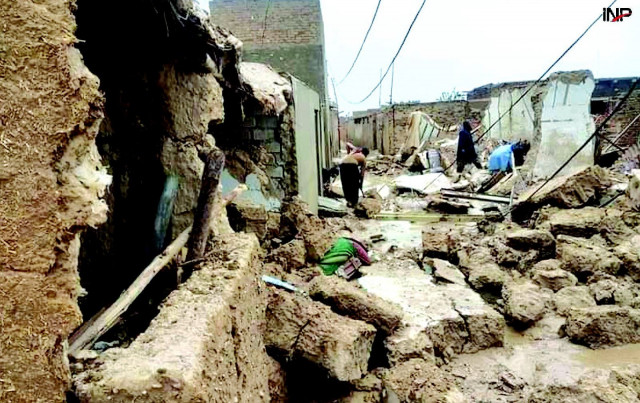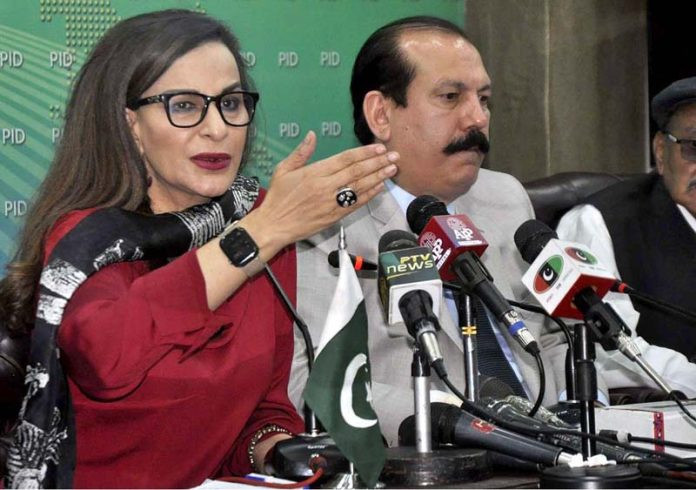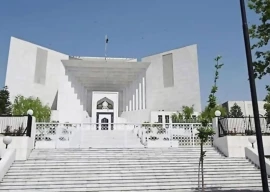
A severe monsoon spell this year caused extensive damage up and down the country, killing several dozen people, triggering flash floods because of glacial lake outbursts, with Balochistan and Gilgit-Baltistan bearing the brunt of merciless rains.
The death toll in torrential rains and flash-floods-related incidents rose to 43 on Wednesday, from 25 overnight, where many areas of G-B, particularly the Ghizer district, were mostly affected by at least 16 glacial lake outburst flood (GLOF) events over a few weeks.
According to Climate Change Minister Sherry Rehman, the country received 87% above normal rainfall during the current monsoon season, adding that there were 16 GLOF events this season due to extreme heatwave.
A massive rescue operation had been launched in Balochistan where the death toll rose to 43 on Wednesday night. Most of the deaths occurred in Quetta, Qilla Saifullah, Qilla Abdullah, Bolan, Kohlu and Barkhan districts, officials said.
They added that at least 50 people were injured in rain-related incidents, who had been shifted to various hospitals. The provincial government had declared emergency in all government hospitals.
Elsewhere, two more people died in Karachi of electrocution and roof collapse, a day after the city received first monsoon showers. Three women were swept away by flood in Tochi river in North Waziristan district of Khyber-Pakhtunkhwa after heavy rains.
“For me, it’s a national tragedy,” Climate Change Minister Sherry Rehman told a news conference in Islamabad “When people die like that, it’s not a small thing... It is just the beginning. We have to prepare for it.”
Overall, the minister put the death toll at 77 since June 14, which included 37 fatalities in Balochistan and excluded the deaths which occurred in Karachi and North Waziristan later in the day. If these figures are accounted for, the nationwide death toll nears 90.

Federal Minister for Climate Change Senator Sherry Rehman is addressing a press conference at PID on July 06, 2022. PHOTO: APP
The monsoon, which usually lasts from June to September, is essential for irrigating crops and replenishing lakes and dams across the Subcontinent, but each year also brings a wave of destruction. Poorly built homes in rural areas are prone to collapse in floods.
Minister Rehman said that the monsoon and pre-monsoon events were going on along with continuous environmental incidents taking place across the country. “Pakistan has become the sixth most-affected country due to climate change.
This monsoon season, according to the minister, the country received 87% above normal rainfall. The highest above normal ratio was in Balochistan and Sindh at 274% and 261% respectively. It was 28% less than normal in Khyber-Pakhtunkhwa (K-P) and 22% in Punjab.
The minister confirmed four deaths in Ghizer district of G-B because of flash floods in the area. G-B Chief Secretary Mohiuddin Ahmad Wani said that the four people died in severe flood in Derini village. He added that the bodies had been retrieved, while three people were rescued.
Wani said that relief operations, involving officials from the Gilgit-Baltistan Disaster Management Authority (GBDMA), Rescue 1122 and the local district administration, were in full swing in the flood-battered areas.
“All possible steps are being taken to rehabilitate the flood-affected areas of Gilgit-Baltistan, including Derini village of Ghazar district, Ghasang, Mehdiabad and Turkti areas of Kharmang in Baltistan,” Wani added.
The first spell of monsoon started on June 29 and is expected to persist longer, Rehman told the presser in the federal capital. She underscored that it was the sixth day of heavy monsoon rains and the authorities concerned would have to remain vigilant.
She warned that the monsoon pattern was prevailing in the south, which would head towards Punjab. “The provinces will have to take their preparedness seriously. Like Karachi would have faced a storm but the situation subsided after scattered spell of monsoon,” the minister added.
“The National Disaster Management Authority (NDMA) had prepared a monsoon contingency plan, she said. “The government is active but the public should also play their role to protect themselves and their livestock in inclement weather, especially those in low-lying areas.”
Live🔴
— Government of Pakistan (@GovtofPakistan) July 6, 2022
Minister for Climate Change Senator @sherryrehman addressing Press Conference. @ndmapk https://t.co/apcybMve0n



















COMMENTS
Comments are moderated and generally will be posted if they are on-topic and not abusive.
For more information, please see our Comments FAQ